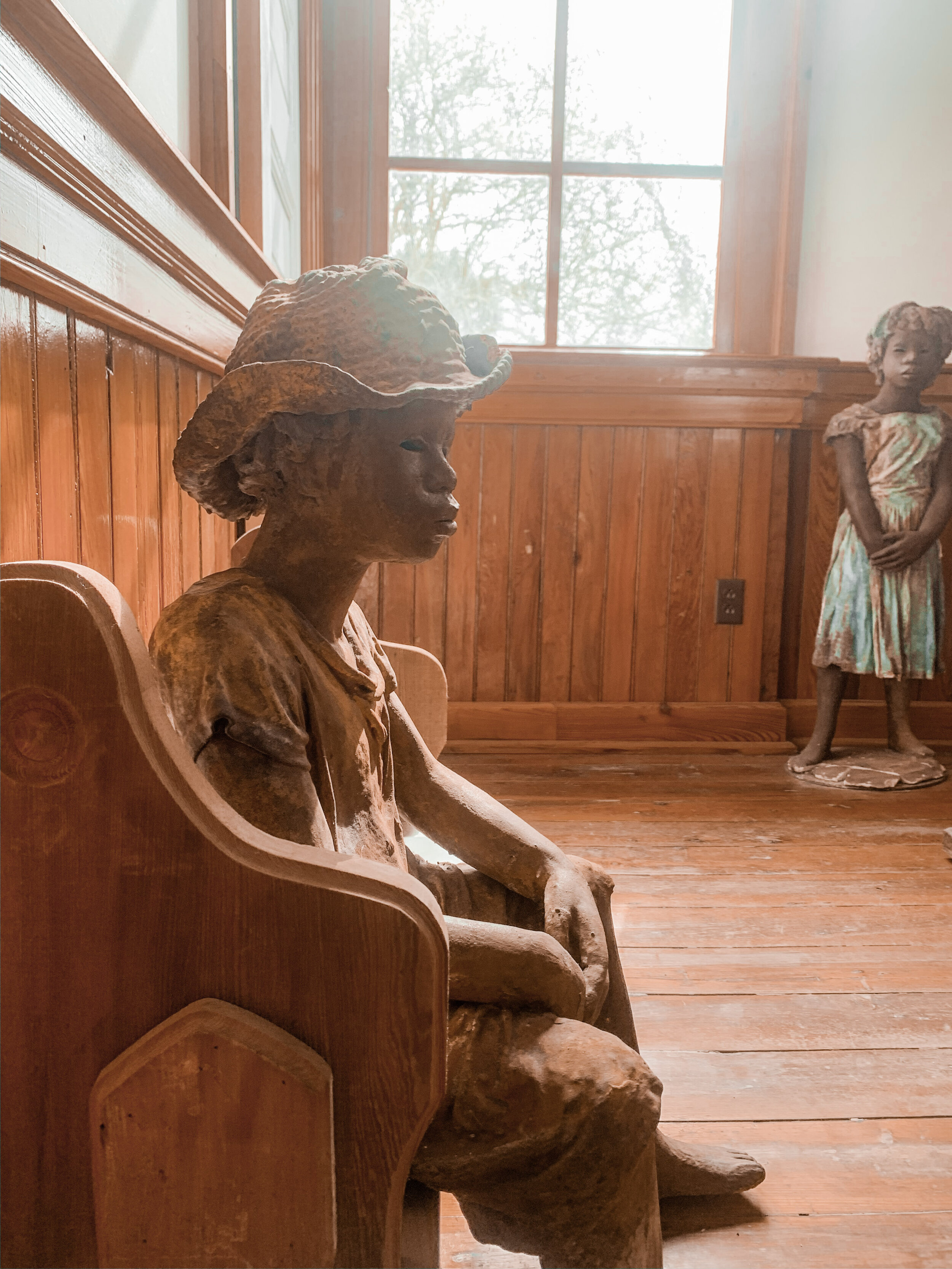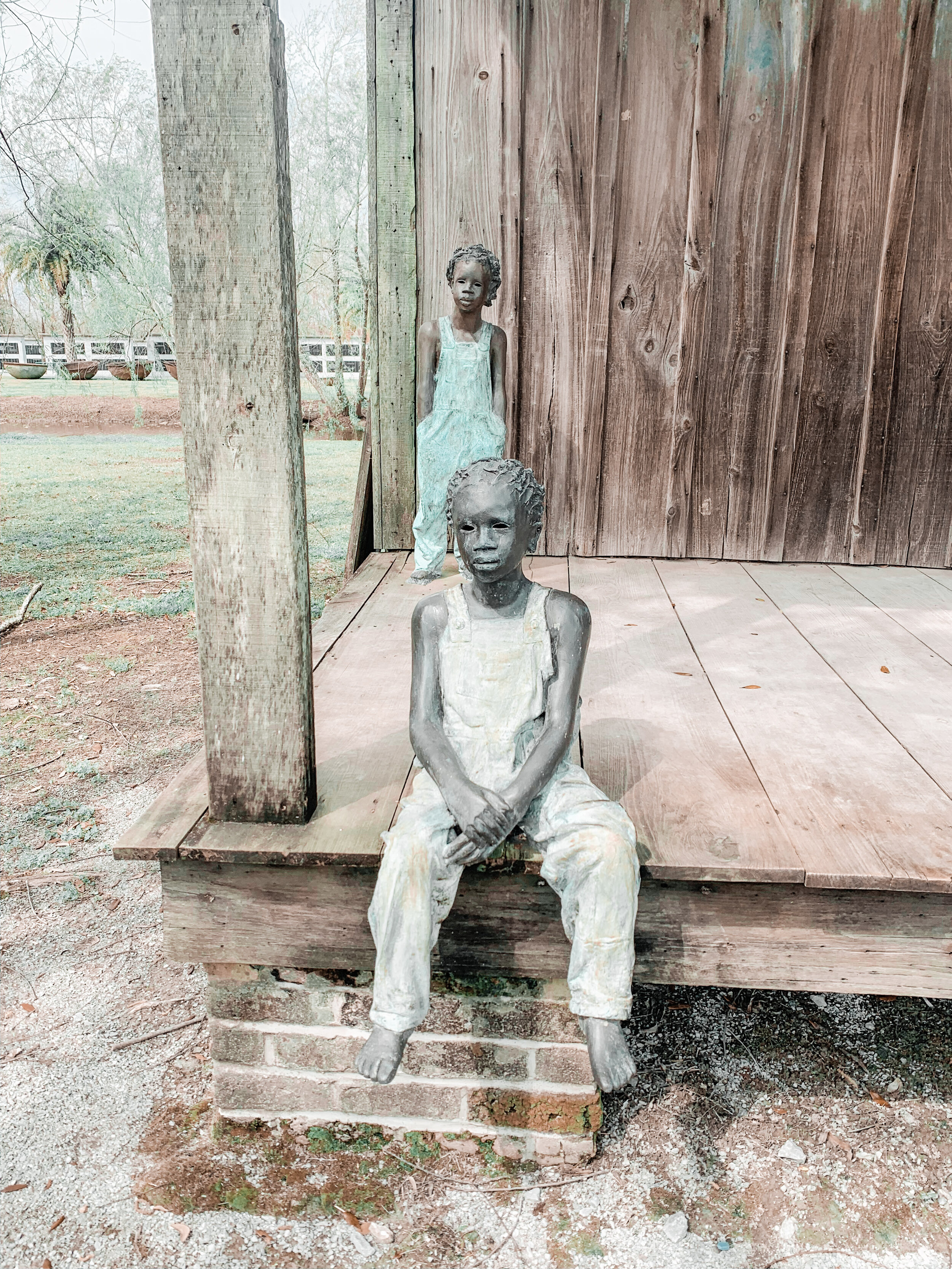Lost in New Orleans: Exploring Whitney Plantation & Oak Alley Plantation with Grayline’s Double Plantation Tour
I was raised in the beautiful sunshine state of Florida and American History was one of my favourite subjects when I was younger. When I moved to Canada, I continued to dive into America’s rich history by taking a few courses in high school. What fascinated me the most about American History was the history of slavery as well as the civil rights movement. Coming from the Dominican Republic (which was the first location where African slaves were transported to in the Americas) I was always curious about the history of my ancestors.
When I booked a trip to New Orleans, I knew I had to set some time aside to step outside the lively city streets that were filled with jazz, beignets and gumbo, to take a deeper look into the history surrounding it. Through a bit of research, I found the perfect trip with Grayline’s double plantation tour.
A long stretch of road runs along the Mississippi river, leading to several antebellum homes, surrounded by large oak trees cladded in Spanish moss and endless fields of plantations. The plantation homes are grandiose and are the emblem of southern opulence. You can close your eyes and almost imagine a time of horse drawn carriages, corsets and hoop skirts, and a scene straight out of Gone with the Wind. But beneath this façade lies a dark history; A history that involved slavery. Slaves that built these very homes and worked the fields around them.
Slavery & Louisiana:
With sugar and plantations surrounding the city, New Orleans developed a thriving market for enslaved Africans and was considered the largest slave market in the deep south. One of the tour guides, Ali, mentioned that the conditions would have been much harsher than the conditions of plantation life in the Northern states due to the extreme labour conditions involved with sugar cane harvesting (as opposed to the cotton fields of the North). Slave owners of the North are said to have threatened misbehaving slaves by telling them they would ‘sell them down the river’, referring to the Mississippi River which lead to both of the plantations that I visited on my tour.
Oak Alley Plantation:
Named after the beautiful manicured grounds of larger-than-life oak trees that tower over a path leading to a plantation, Oak Alley Plantation is breathtaking. The plantation sits right next to the Mississippi River. The large oak trees date back to the 18th century and create a beautiful canopy, almost like skyscrapers towering over the path.
The house tour that I took was mostly focused on the house and families that lived in the home up until it became open to the public. The tour highlights what life was like in the plantation home.
While the Oak Alley Plantation tour was very informative and I would highly recommend it, it was definitely a brief half hour overview touching on the experiences of the house slaves and the lives of the original plantation owners, Jacques and Celina Roman. The hardships faced by the slaves are definitely mentioned, but more in relation to the family that owned the plantation.
Without question, the grounds are incredibly beautiful, albeit in a bittersweet kind of way, considering what took place here over 150 years ago. I sipped on a refreshing Mint Julip while sitting on the wraparound porch admiring the grounds and although part of me almost felt a little guilty for enjoying the moment given the harsh history, I reminded myself how amazing it is to see how far things have come and watching people of all ethnicities taking it all in. In the words of a medical student (who visited Whitney Plantation with his fellow classmates):
“we are our ancestors’ wildest dreams”.
Medical students and some direct descendent of slaves pose in front of the slave headquarters at Whitney Plantation which is the next plantation I write about below.
Whitney Plantation:
Whitney Plantation is a museum that really draws attention to slavery from a different perspective…from the slaves themselves.
Hundreds of artifacts have been collected including actual interviews from former slaves that were children at the time on the plantation. It really takes you far beyond the plantation owner’s lives and into a real and raw experience.
Statues of African slave children (created by artist Woodrow Nash) surround the museum grounds, each one lifeless. The eyes are intentionally hollow as the artist’ way of expressing that each and every one of these children are the epitome of hopelessness. It’s incredibly impactful and nauseating at the same time.
Upon entering, each guest is provided with a lanyard that includes a card with a child slave on it . The little girl’s name on my card was Ellen Broomfield. She was one of 19 children in her family, and was put to work plowing the fields as soon as she was big enough.
The slave quarters, Whitney Plantation
Regardless of how long it has been, one can’t help but to feel for these people. I could write an entire book about what I saw and heard but it’s best you make your way out here one day to experience it for yourself.
Overall, I highly recommend exploring the plantations outside of New Orleans. They are filled with so much history and really give you a taste of the South in another era. Grayline was a fantastic way to experience not only one, but two of these plantations and I cannot recommend it enough.
A huge thank you to Grayline Nola for hosting me as a guest on this tour. Our driver and tour guide, Gerald, was very knowledgeable and had a warm, southern hospitality charm. All opinions are my own.














